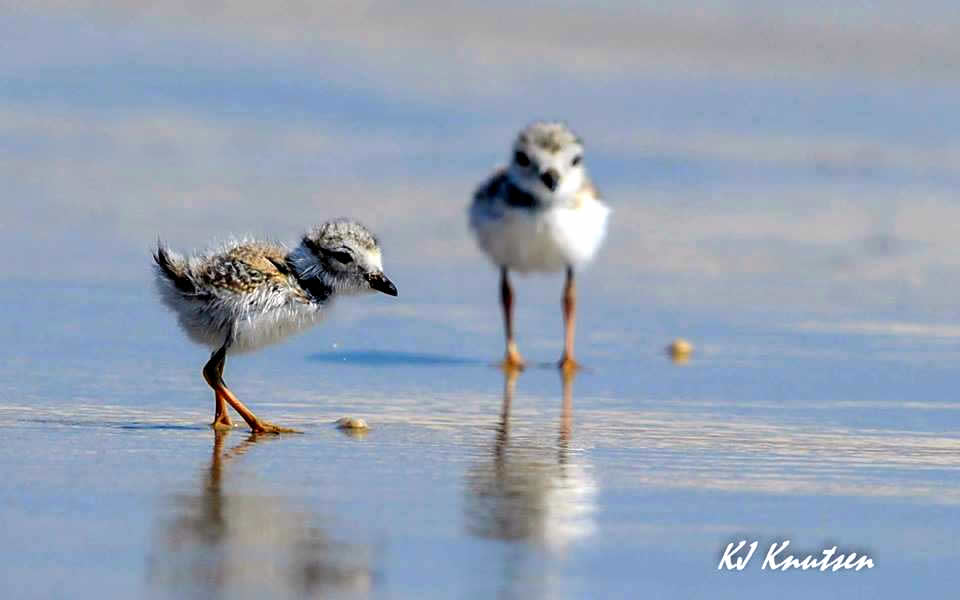2 endangered piping plover chicks fledge at Island Beach State Park

The two piping plover chicks in Island Beach State Park. (Photo: KJ Knutsen)
Success!
Two chicks from one piping plover nest in Island Beach State Park’s Southern Natural Area recently fledged, or flew for the first time.
“The fledging of two chicks from this location is great news for recovery of the federally threatened and state endangered piping plovers in New Jersey,” a New Jersey Division of Fish & Wildlife spokesperson said in a release. “NJDEP Division of Fish and Wildlife biologists hope this is an indication of a rebounding population after population swings witnessed between 2003 and 2014.”
The chicks were from the first ocean-side nest in more than 25 years and the first in Island Beach State Park in more than a decade, according to the release.
But it wasn’t an easy path for the piping plover parents and their brood.
The state reported that four chicks hatched in early July, with one quickly lost to an unknown cause — “most likely predation,” the spokesperson said — which is common with this species.
Then a few weeks later, observers did not see another chick for three days, eventually determining it to have been lost.
On July 23, one of the remaining chicks was observed with a moderate limp, and after examination, specialists treated the injury with leg bands as piping plovers “do not fare particularly well in rehab,” the release said.
But two days after the leg band application, experts determined that the chick weighed much less than its sibling and the limp was quite pronounced. The chick then spent four days at Toms River Avian Care before returning to the nest.
By late July, the flight feathers were developing, signaling imminent flight. The uninjured chick was observed taking a short sustained flight on August 6.
An endangered small sand-colored shorebird, the population increased 17% to 108 pairs in 2015, as compared to 2014, according to an annual report from Conserve Wildlife Foundation of New Jersey.
But the the population still remains below the long-term average (118 pairs) since it appeared on the federal threatened and endangered species list in 1986 and well below the peak population, the report found.
According to the report, the birds face a number of threats, including intensive human recreational activity on beaches where they nest, high density of predators, and a shortage of highly suitable habitat due to development and extreme habitat alteration.
WHYY is your source for fact-based, in-depth journalism and information. As a nonprofit organization, we rely on financial support from readers like you. Please give today.

